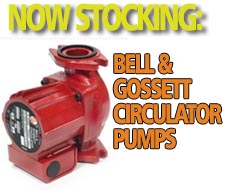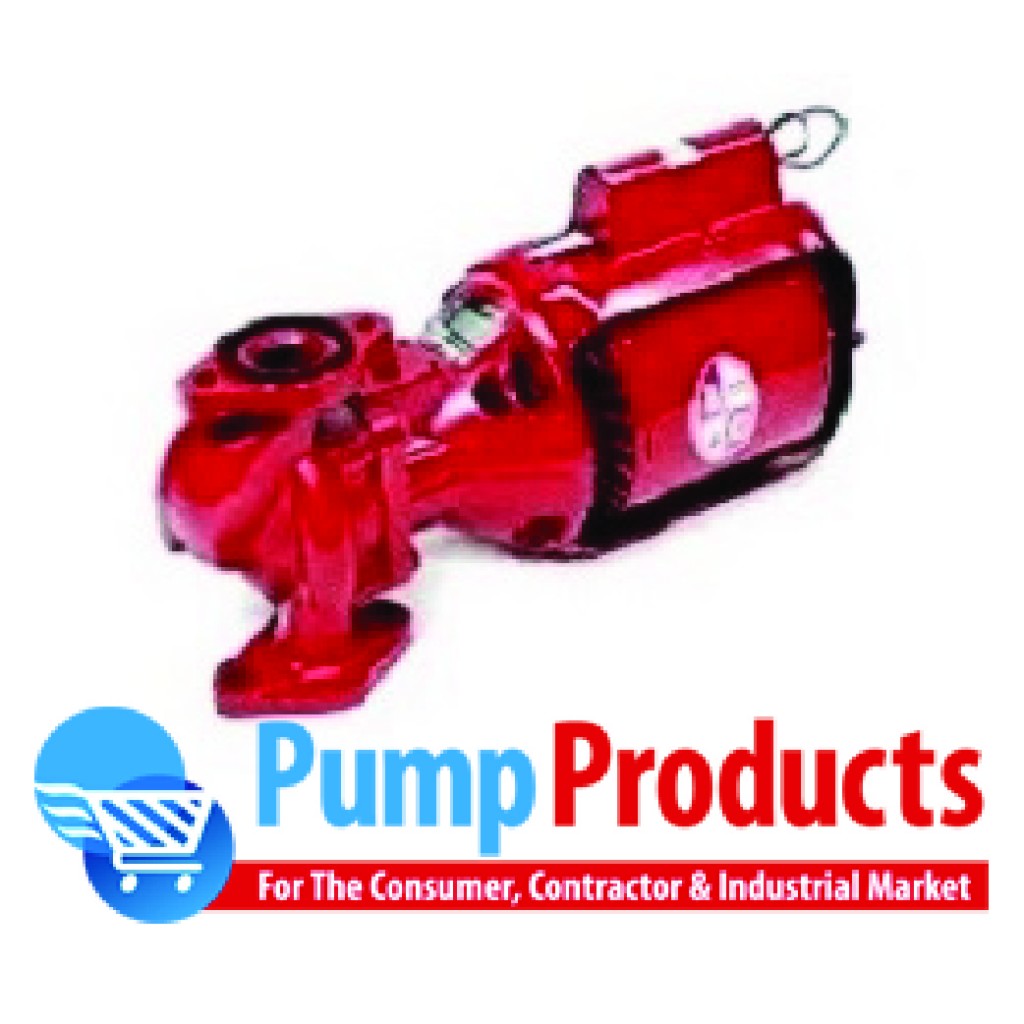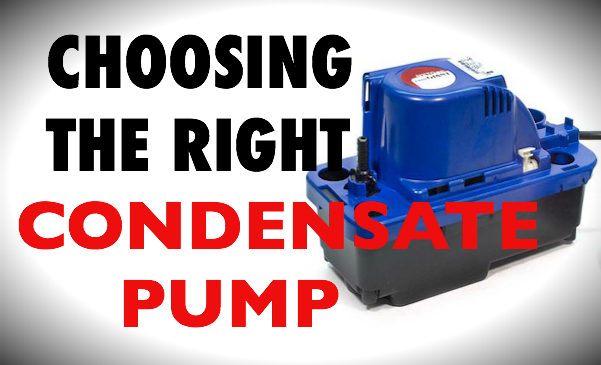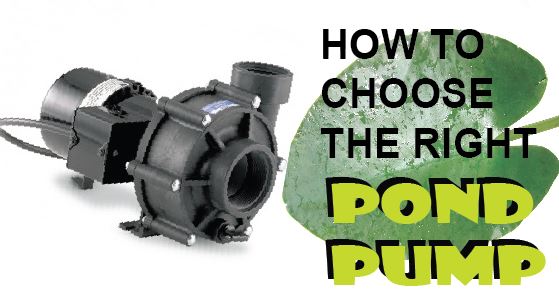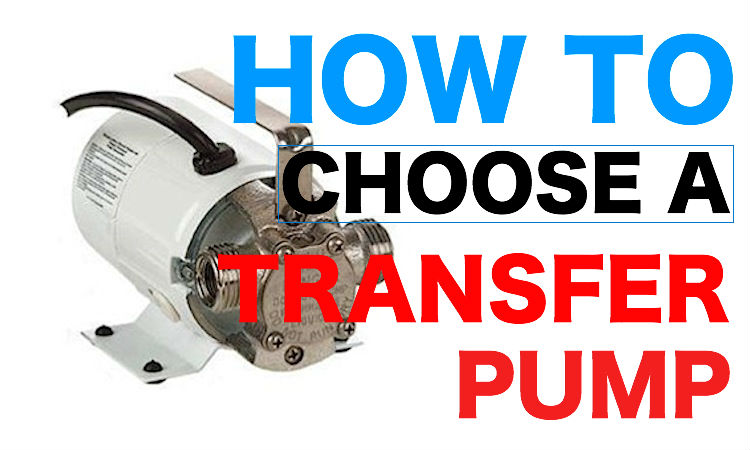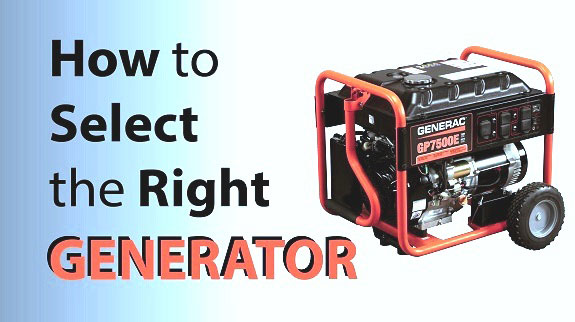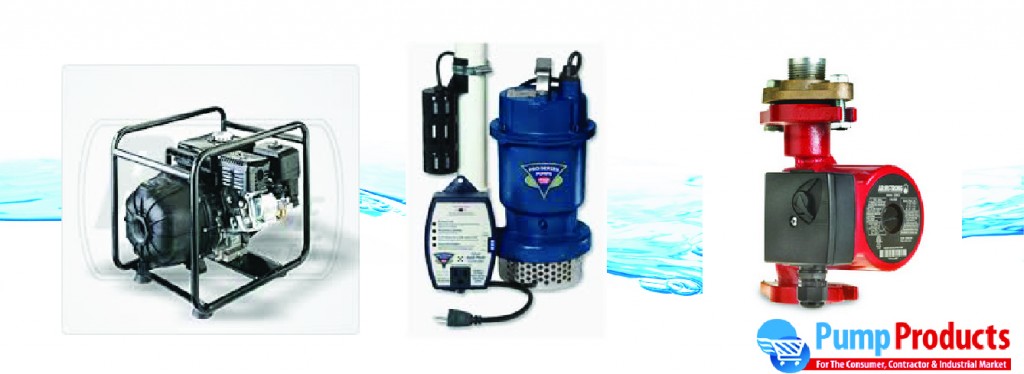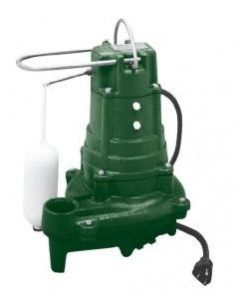-
Pump Products Has Large Winter Inventory of Bell & Gossett Circulator Pumps ...
December 18, 2013In preparation for the coldest winter temperatures, the product experts at Pump Products have assembled an extensive inventory of Bell & Gossett pumps and repair parts. “We have everything on site and ready for immediate shipping,” says Product Expert Fred Hettinger. “From large commercial Series 60 Inline pumps to residential best sellers like the NRF Series 3-Speed Wet Rotor circulators, we’ve got the HVAC supplies topping everyone’s wish list.” Hettinger says he and the Pump Products team have also compiled a deep inventory of Bell & Gossett repair parts to support pumps already out in the market. (more…)
-
Pump Products Provides E-Shoppers with High Quality Pump Images
December 12, 2013In an ongoing effort to provide customers with the best available information on our products, Pump Products is making high-quality, original photos of pumps and accessories available to on-line shoppers as an aid to product selection. "Before we launched PumpProducts.com, we found that a lot of the stock images that appeared on-line were inaccurate or showed little detail. In the case of replacement parts, images often didn't exist," says General Manager Ed Drejman. "By producing our own photos in-house, we provide our customers with much more information than they are likely to get elsewhere. With high-grade images, detailed descriptions and specifications, manuals and click-on reviews, we're offering product information that's on par with, and in many cases, exceeds, an in-store shopping experience." (more…)
-
Winter Is Circulator Pump & Generator Season at Pump Products
December 4, 2013Based in the Northeast, where winters can be long and brutal, Pump Products' staff know there’s nothing worse than losing heat or power at home. That’s why each fall we deepen our inventory of heating pumps, power generators and other products designed to keep a home dry, warm and connected during the worst winter weather. “This is when the heating system is at it’s highest demand” says Application Engineer Fred Hettinger. "We’ve brought in the most popular circulator pumps and all the parts necessary to repair them in the event of a failure." We have Bell & Gossett's NRF Series, PL Series, Series 60, HV Series, HD3 Series and 2” and 3” Series circulator pumps in stock and ready to ship. (more…)
-
Condensate Pump Buyers Guide
October 7, 2013Dehumidifiers, drinking fountains, soda machines and ice makers all produce condensate that will accumulate and cause damage unless it is removed. Large climate control and refrigeration systems, often produce large volumes of condensate requiring continual draining and disposal. View our condensate pump video Video used courtesy of Steve Markee Condensate pumps are designed to move the water produced by moisture-prone equipment to a holding tank before routing it to a sewer or drain. The holding tank collects condensate liquid until it rises to a level that raises an internal float switch which activates the pump until the liquid level in the tank is lowered. Condensate pumps are available in centrifugal, peristaltic and other styles and range in size from small fractional horsepower units to large industrial pumps that recycle condensate water within a system. The output of small condensate pumps is usually routed to a sewer or drain. Because condensate water can be very hot and contain acids and other contaminants it may require careful handling and disposal according to local regulations. When correctly installed and maintained condensate pumps usually provide years of trouble-free service. Pump Products has an inventory of quality condensate pumps and accessories suitable for use in a wide range of applications. Choosing A Condensate Pump The first step in choosing the right condensate pump is to determine if your application is subject to local condensate handling and disposal regulations. Select a model that operates within these guidelines. Figure out the lift requirement for the pump by identifying where the pump will be mounted and where the discharge point will be. Condensate flow will decrease in accordance with the height it must travel until maximum, or "shut-off" lift is reached. Select a pump with a maximum lift rating that is suitable for your application. Check your equipment service manual to determine the condensate output and choose a pump with sufficient capacity. As a general rule, the output flow of the pump should be at least double the input rate from the appliance. Ascertain your voltage requirements. Most pumps are available in 115 or 230V. Some commercial grade pumps are available in 460V. If property damage or personal injury can result from an inoperative or leaking pump, choose a condensate pump with an alarm or auxiliary switch backup system or install one with your pump. TIPS Unplug the pump and clean out the reservoir at the beginning and end of each heating season. Use a commercial algaecide and follow manufacturer’s instructions. Never pump flammable liquids Do not handle unit with wet hands or while standing in water Do not expose pump or discharge to freezing temperatures For detailed specs, manuals and reviews of the condensate pumps we stock and ship nationally, visit our product pages at www.pumpproducts.com or call us for details: 1-800-429-0800.
-
Pond Pump Buyers Guide
October 5, 2013A properly sized pump will ensure the well-being of a pond’s aquatic life, optimize its beauty and keep utility costs down. The first thing to consider when selecting a pond pump is whether it will be used primarily for a waterfall, fountain display or for filtration and recirculation. Fish pond pumps are often required to perform at a higher capacity than fountain pumps while waterfall pumps must be sized according to both pumping capacity and waterfall height. View our pond pump video Video used courtesy of Living Water Aeration Selecting the Right Pond Pump Because all pond pumps are sized in gallons per hour (GPH), knowing the volume of water in your pond is key to ensuring adequate circulation. Insufficient circulation can result in stagnant water and an environment unable to sustain fish and plants. As a general rule, pond water should be circulated about once every hour. Consequently, a pond containing 500 gallons requires a pump rated at a minimum of 500 GPH. Total pond gallons can be determined by connecting a water meter to a garden hose while initially filling the pond. To calculate the approximate volume, multiply the pond’s length in feet x width in feet x depth in feet x 7.5. In addition to circulating water, pond pumps are often required to lift water. Head height is the vertical distance the pump must raise water above the surface of the pond. The greater the head height, the harder your pump will have to work. To determine your head height, calculate the following: A = The vertical height from the top of your pump to the top of your water stream. B = Total feet of tubing connecting the top of the water stream to the water filter. C = Number of 90 degree bends and reducers. D = Number of filters and miscellaneous adapters you will be pumping water through. (Both C & D put additional pressure on the pump.) Plug your pond’s coordinates into the following formula: A + (B / 10) + (C / 2) + (D / 4) = Approximate Head Pressure For Example: A = Vertical Height = 4’ B = Total Distance = 8’ C = Number of 90 degree bends and reducers = 2 D = Number of misc. adaptors = 6 4 + (8 / 10) + (2 / 2) + (6 / 4) = 7.3 Total Dynamic Head Pressure Most pumps are sold with flow charts illustrating how they perform across a range of measures. Other factors to consider when choosing a pond pump include. Width of Spillway: In waterfall applications, 1 inch = 125 GPH. Fish Load: In fish pond applications, maximum fish load is approximately five inches of fish per five gallons of pond water. Voltage /Energy Consumption: Because pond pumps are designed to run constantly, every watt will add substantially to utility costs. POND PUMP TYPES Magnetic Drive Pumps are the most energy efficient pond pumps and, though costlier than direct drive models, they quickly pay for themselves in utility cost savings. Magnetic drive pumps are oil-free and therefore safe for ponds stocked with fish. They are not ideal for high head applications due to their limited ability to push water to significant heights. Direct Drive Pumps are better-suited for powering water features with high head height. These motor-driven pumps tend to cost less than their mag-drive counterparts but require a substantial amount of energy to operate. Unlike mag-drives, direct drive pumps are often self-priming and will draw water to them. Submersible Pumps are designed to run while quietly submerged in a pond. Their unobtrusiveness lends itself to naturalistic settings. Maintenance, however, can be inconvenient as submersible pumps must be periodically pulled from the water and cleared of debris. External Pumps require less maintenance than submersible pumps and tend to have a longer life. They are often loud and have to be camouflaged but require less energy than submersible pumps, particularly in larger applications. A 6000 GPH external pump can run on 450 watts, where as a standard submersible pump generally requires 750 – 1200 watts. TIPS When shopping for a pond pump for a stream or waterfall, bigger is better. Make sure its head capacity, or lift, is well above the height you've planned for your falls. Check the pump cord length. Some codes require the electrical outlet for a water feature to be at least 6 feet away from water. Consider purchasing two pumps at once. An extra pump could save your pond if your existing pump should fail. For detailed specs, manuals and reviews of the pond pumps we stock and ship nationally, visit our product pages at www.pumpproducts.com or call us for details: 1-800-429-0800.
-
Transfer Pump Buyers Guide
October 3, 2013Transfer pumps are used to move fluids from one location to another. These lightweight, portable units are suitable for a wide range of applications including pool cover drainage, livestock watering and wet-vac projects. They are also an effective means of boosting water pressure and draining hot water tanks. Choosing the Right Transfer Pump Transfer pumps can be applied to a variety of liquids. Thin liquids such as water can be moved with basic pumps while thick liquids such as oil require specialized pumps. Two important things to consider when choosing a transfer pump are: a) the type of job you will use the transfer pump for b) the size of the pump will you need A transfer pump obtained to drain a waterbed may not be suitable for draining a hot water tank or flooded basement. Check a pump's specifications and match them against the power, liquid volume and temperature demands of the task you to apply it to. A transfer pump is activated by priming the outlet and inlet pump, connecting the water suction attachment, and connecting the pump to a power source, making sure the pump is located in a dry area. Most transfer pumps are non-submersible and should not be used in running showers, saunas, or other wet locations. For optimum efficiency, a transfer pump should be placed as close to liquid and power sources as possible. So, along with ambient moisture, cord length is an important consideration when choosing a transfer pump. Transfer pump's are available in a range of styles and power options, with variations in basic features including priming options, maximum temperature settings and fitting settings. Pump Products carries a selection of transfer pumpsto suit every application. TIPS Use reinforced plastic tubing or metal pipe for the suction side of the pump to prevent collapse of the suction piping. Do not coil or kink connection hoses. Discharge piping should never be larger than suction piping. Be sure all connections are air tight. Unplug the pump before all the water is completely gone. Do not run the pump dry. Impeller and mechanical seal damage will result. Clean and flush your pump after each use. Chemical residue can corrode the inside of your pump. For detailed specs, manuals and reviews of the transfer pumps we stock and ship nationally, visit our product pages at www.pumpproducts.com or call us for details: 1-800-429-0800.
-
New Online Pump Retailer to Offer Low Price Guarantee
October 3, 2013This November online pump, motor and generator store, PumpProducts.com, will enter the e-commerce market with an innovative cost-cutting deal. If within 30 days of a purchase at PumpProducts.com, a customer finds that product nationally advertised for less, the company will refund 110% of the difference. The online market is fast-moving and competitive and prices are changing all the time," says General Manager Ed Drejman. "We're offering a 110% refund on cost differential to show that we're serious about maintaining the low prices on the web. As an added incentive to on-line shoppers, we're going to offer free shipping on qualified orders over $299." Pumpproducts.com will extend a large inventory of hydronic pumps, repair parts and accessories, featuring products by Armstrong, Zoeller, Liberty, Hydromatic and other leading manufacturers to residential, commercial and industrial customers. The company will sell pumps for the full range of wastewater, HVAC, recirculation and irrigation applications. An extensive selection of electric motors and generators will be available as well. "PumpProducts.com will cater to on-line shoppers who have a good idea of what they need and are primarily interested in getting quality equipment at the best price," says Product Expert Craig McCrickard. Like many of the company's staff, McCrickard brings extensive pump industry experience, including hydronic design, configuring and application to the task of stocking and selling pump products through the site. "We set out to raise the bar on what on-line shoppers are offered by cherry-picking an inventory consisting of the best quality merchandise and presenting it alongside the best product information on the web," says McCrickard. "The Low Price Guarantee is our way of offering customers the best possible e-commerce deal." PumpProducts.com is the digital portal of an established Northeast pump distributor with 500,000 square-feet of warehouse space and an extensive inventory of repair parts and electric motors. In addition to guaranteeing the low price available on the internet, the company also offers express delivery across the United States. "We aim to be the go-to supplier of leading brand pumping equipment for the commercial, industrial and residential markets and the way to do that is by outperforming everyone else out there," says McCrickard. "The Low Price Guarantee is the 'wow factor' we think will separate us from the pack."
-
Generator Buyers Guide
June 6, 2013Are you looking for a power source to fuel a camp site, job site, business or home Consider your energy needs when deciding whether a portable or standby generator is right for you. Versatile portable models can be used to power a few key appliances such as lights, tools, a sump pump, a refrigerator and a radio during a black-out or moved to locations without electrical power. They require no installation and will go to work right out of the box. Permanent standby models are connected to the electrical panel of a building and use it’s natural gas or propane supply to keep lights, refrigerators, air conditioners, pumps, furnace fans, and other major appliances running without interruption for extended periods of time. View our Generator Video Video used Courtesy of Generator Superstore Sizing Your Generator Generators are rated in kilowatts (amps x volts = watts; 1000 watts = 1 kilowatt). In an average home, key appliances run on 5,000 to 7,000 watts of power. To determine the size of the generator you need, add up the total wattage of the appliances you want to run simultaneously, making allowances for the surge wattage requirements of motor-run appliances, and bearing in mind that a generator is most efficient when operating at 75 percent capacity. WATTAGE For a precise estimate of your power needs, refer to the wattage information provided on your appliances, verify wattages with a tester, or have a professional electrician provide you with a household reading. Choosing the Right Model Once you establish the amount of power you require, you can decide whether a portable or stand-by model is best for you. Some important factors to consider include: FUEL SUPPLY: Portable generators require frequent refueling with gasoline, diesel or propane and will only accommodate as many appliances as they are equipped with outlets for. Stand-by models can run directly on your home’s fuel source and will power as many appliances as they are rated for. MOBILITY: Portable generators are smaller than fixed, stand-by models and are often equipped with wheel kits that allow for easy transport between home, job and recreation sites. VOLUME: Generators can be very loud, often exceeding 100 decibels, or the equivalent of a lawn mower running non-stop. If you plan to run your generator in an area with noise restrictions, check the decibel rating or consider an inverter generator, which runs more quietly than a conventional one. Select generator models feature Quiet Test technology or operate at lower RPMs for reduced noise levels. PORTABLE GENERATORS Portable generators can be used to supply power during an outage, to run lights and appliances during camping trips and other outdoor recreational activities, and to power tools on construction sites where there is no electrical service. Most portable generators run on gas, diesel or propane. Small generators (800-2,000 watts) are a popular choice for portable electronics such as laptops, power tools and camping equipment. (NOTE: Standard generators are not recommended to run computers. Inverter generators, designed to run at varying speeds, are more appropriate to the power requirements of sensitive electronics.) Mid-sized generators (3,000-5,000 watts) can be used to simultaneously power a sump pump, refrigerator and other key appliances. A 5-kilowatt portable generator can power a heating system and a few other essentials. Large generators (6,000-9,000 watts) will power key appliances and energize several rooms in a house. X-Large generators (10,000+ watts) will maintain vital appliances and central air-conditioning during a summer black-out. STANDBY GENERATORS A standby generator will automatically restore power to a home if power is interrupted and will continue to run until power is restored. Standby models are available in a variety of power outputs ranging from small units rated at 6,000+ watts that can simultaneously run a refrigerator, sump pump, furnace fan and other vital appliances to large units producing 40,000+ watts that can run and cool a business or large home. Standby models are sized in accordance with a building’s power capacity. The maximum amount of electricity a building can consume is determined by looking at the electrical panel. If the panel indicates 100-amp service, the building can take up to 100-amps and a properly sized generator will be capable of powering up to 100-amps. Optimum wattage, however, depends on the amount of the electrical panel that will be energized. Home standby systems usually have weather-proof exteriors and can therefore be mounted on concrete slabs outside of the buildings they serve. They connect directly to building electrical circuits via automatic transfer switches that start the generator during a power outage. Home standby units are commonly connected to a home's natural gas line, eliminating the need to fill fuel tanks. Large industrial generators often provide back-up power for grocery stores, hospitals and other large commercial or industrial operations that depend on a constant power supply. These heavy-duty units are generally powered by water-cooled diesel engines and can generate up to 200,000 watts of power. TRANSFER SWITCHES Transfer switches are required by many city and state electrical codes. When using a generator, a transfer switch will provide back up power for vital appliances, such as a boiler and furnace, that are directly connected to a building's electrical circuits. A transfer switch can be set up to power only a few circuits or an entire home. Some transfer switches allow for prioritization of circuits powering heating and cooling equipment. Large backup generators are often equipped with complex emergency switches that seamlessly transfer and regulate power flow from the utility grid to generators and back. Transfer switches are available in manual and automatic models. Automatic Transfer Switch During a power failure, an automatic transfer switch will transfer electrical circuits from utility power to the generator. When power returns, it will automatically switch back to utility power. This eliminates having both power sources on the selected circuits at the same time, protecting the generator from surge damage when power is restored and safeguarding utility workers who expect lines to be dead. Automatic transfer switches are available in a variety of amps. As a general rule, the amperage of a transfer switch should correspond to the amperage of the main breaker in an electrical panel. A 100-amp main breaker will therefore require a 100-amp transfer switch. Automatic transfer switches are available with load centers that connect to 8-16 mission critical circuits in small homes with 100-amp inbound service and a service disconnect design that will energize an entire electrical panel in larger homes with 200-amp power supplies. Manual Transfer Switch A manual transfer switch is installed next to a main electrical panel and connected to critical circuits. Most transfer switches are pre-wired with the circuit breakers already selected. When the power goes out, a power cord is run from the generator directly to the transfer switch. Circuits to be energized can be manually selected using switches. Built-in wattage meters keep track of power usage, preventing system overload and damage to generator and appliances. Manual transfer switches are sized to accomodate a power cord. A 30-amp transfer switch corresponds with a 30-amp cord. POWER INVERTERS A power inverter converts direct current (DC) power from a car or boat battery to alternating current (AC) electricity that will power appliances. Inverters are a popular choice for powering radios, coffee pots and precision electronics such as laptops and portable DVD players in areas where electricity is not available. Because they can run off of charged automotive batteries, inverters can also provide temporary power for lights, radios and other essential applainces during a power outage. An inverter is most economical for running low load appliances under 1000 watts. Power inverters are available in modified sine wave and true sine wave outputs. Modified sine wave inverters deliver power that is consistent and efficient enough to run most devices adequately. They are affordable, small and highly efficient. Some laptops, variable speed tools, A/V equipment and medical devices require a true sine wave, which delivers the highest quality wave output. Any AC device will run on a true sine wave inverter. For detailed specs, manuals and reviews of the generators we stock and ship nationally, visit our product pages at www.pumpproducts.com or call us for details: 1-800-429-0800.
-
Armstrong Astro 230 3-Speed Circulator Pump Buyers Guide & Review
June 5, 2013Armstrong’s Astro 2 Series Wet Rotor Circulator Pumps bring adaptability to a new level. Designed to move liquids through closed hydronic or solar heating systems efficiently and with minimal maintenance, these three-speed circulators allow users to match a wide range of application requirements. Rated at 1/25th hp and 115 volts, with a rated flow of zero to 18 gallons per minute and a rated head of zero to 18 feet, the Armstrong 230 is a three-speed pump, designed to handle today’s most common pump applications. Models are available with union, sweat, or rotated flange connections for easy installation in even the tightest corners. Integral check valves prevent backflow and eliminate the need for discrete check valve addition, minimizing installation and maintenance costs. (more…)
-
Pump Products Gears Up For the Market
May 30, 2013Set to launch in September 2013, on-line pump supplier PumpProducts.com has created an inventory of pumps, motors and generators characterized by heavy-duty design, high performance and versatility. The new e-commerce site's offerings reflect the changing demands of the residential and light commercial pump markets. In addition to the leading consumer pumps offered by big-box stores, including models by Armstrong, Taco, Berkeley and Grundfos, Pump Products will offer customers a variety of gas-powered pumps traditionally used in commercial and industrial applications. Prior to 2011, engine driven pumps fueled by gas or diesel were largely limited to agricultural and construction applications. In the aftermath of Hurricanes Irene and Sandy, diesel and gas-powered pumps have become a growing segment of the pump market because they can pump large volumes of water in areas with no power. (more…)
-
PUMP EXPRESS SERVICES CASE HISTORY: Switching Out Sewage Pumps for Shredders In a New...
April 23, 2013The Job Site: A four-building apartment complex in Hackensack, N.J., with a 10 year old Goulds duplex sewage ejector system that is constantly clogging with synthetic debris. The Problem: Removing the pumps to service them. The sewage pit the pumps operate in is 30 feet deep and located outside the building right next to a main road. Pump Express Service techs require 4-6 hours to remove, clear and replace the old pumps each time they service them. They have been called back five times in the last six months The Solution: The building’s managers have decided that maintaining the old pumps will cost more than replacing them with a pair of BJM shredder pumps specifically designed to shear down tough synthetic debris of the kind that is currently hobbling the system. (more…)
-
How To Troubleshoot A Sump Pump
March 30, 2013With all the media attention that preceded Hurricane Sandy, most East Coast homeowners put testing their basement sump pumps high on their pre-storm to-do lists. Those who didn’t, and experienced flooding as a result of pump failure, probably wish they had. Identifying a pump problem in advance could spare a homeowner thousands of dollars in water damage. The following is our step-by-step how-to list. Open the pit that the sump pump sits inside and clear away any debris. Pour several buckets of water into the pit. This should cause the pump to turn on and run with an even humming sound. If it doesn’t turn on, or you hear a grinding sound, you should make arrangements to have it repaired. Pump Express Service techs are manufacturer trained to repair sump and dewatering pumps of all makes and models. Check the discharge line for leaks. A leaking line should be replaced as soon as possible. (more…)


